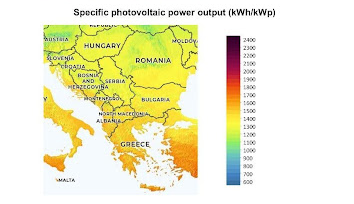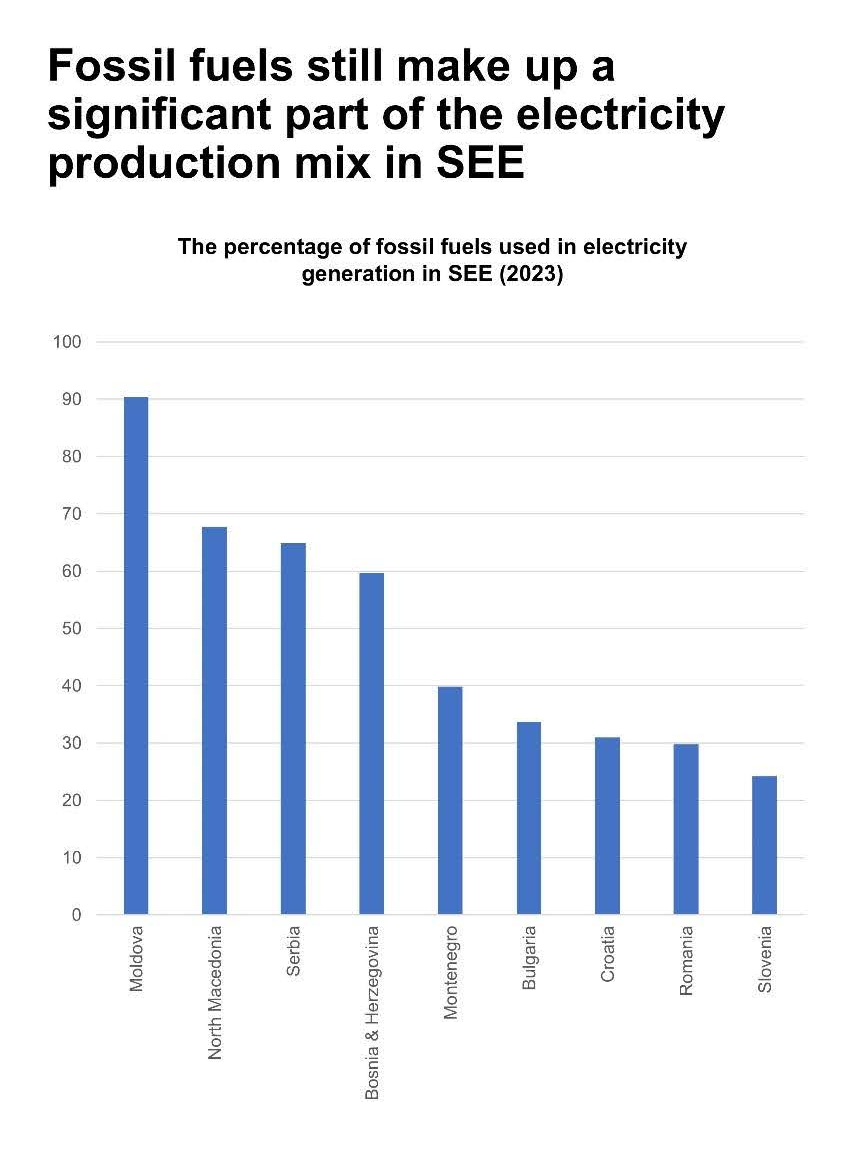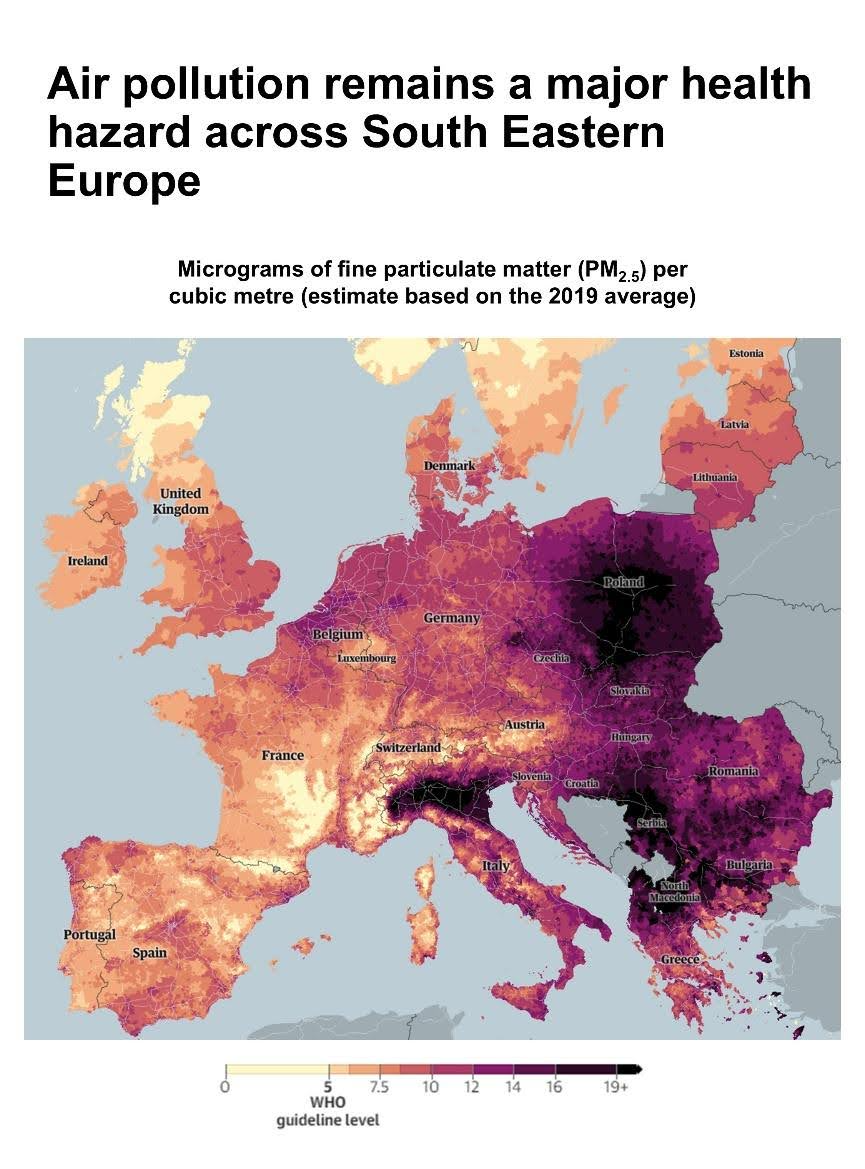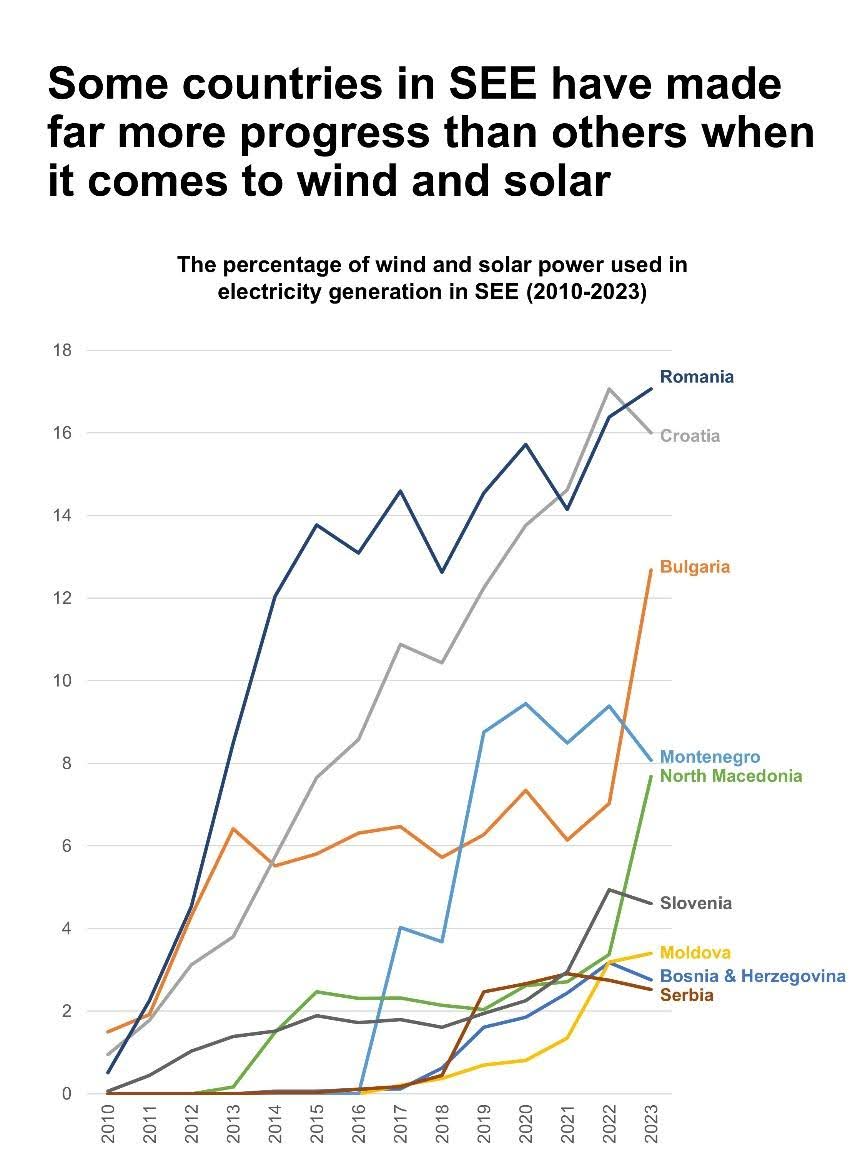Why Southeast Europe is key to Europe’s renewable energy future


As Europe races toward its 2030 climate targets, Southeast Europe stands at a critical crossroads. With vast untapped potential for wind and solar energy, the region is emerging as Europe’s next renewable energy frontier. Once seen as lagging behind its Western counterparts, Southeast Europe is now poised to become a major player, driven by urgent geopolitical, economic, and environmental imperatives. The region, which encompasses countries such as Bulgaria, Romania, Greece, and the Western Balkans, offers immense renewable energy potential that can help Europe meet its ambitious climate goals. Southeast Europe is thus emerging as a key destination for clean energy investments, supported by favorable geographic conditions, growing political will, and the necessity to move away from fossil fuels.
The region enjoys some of the best natural conditions for renewable energy in Europe. Countries like Greece, Bulgaria, and Romania receive between 1,900 and 2,400 hours of sunlight per year, making the region ideal for large-scale solar projects. Coastal areas along the Black Sea, such as Romania’s Constanța County, and mountainous regions in North Macedonia and Serbia are prime locations for wind power development.


Sources: Global Wind Atlas, Global Solar Atlas
Despite these advantages, renewable energy deployment in Southeast Europe has been slower compared to other parts of Europe. As of 2023, the region was still heavily reliant on coal and other fossil fuels, particularly lignite, which is one of the dirtiest forms of energy production. Replacing fossil fuels with renewables offers the greatest potential for emissions reduction.
Bulgaria is a perfect example of this emissions reduction potential. Bulgarian electricity production is still heavily dependent on fossil fuels – particularly lignite, which makes up more than 85% of that fossil fuel total. This is a major problem because while lignite is the cheapest source of electricity from fossil fuels, it causes the highest CO2 emissions per ton when burned, one-third more than hard coal and three times as much as natural gas. In Romania, fossil fuels still made up almost 30% of the electricity mix in 2023.

Source: Ember
The energy transition in Southeast Europe is not only an environmental necessity but also an economic and political priority. The war in Ukraine has drastically reshaped the region’s energy landscape, bringing energy security to the forefront. Many countries in the region rely on imported gas and oil, making them vulnerable to price volatility and supply disruptions. Diversifying their energy mix with renewables offers a pathway to greater energy independence.
The European Union's policy framework is also evolving to push the region toward faster adoption of renewables. The new European Commission, as part of its renewed focus on the green transition, has introduced the Green Industrial Plan to strengthen Europe’s clean technology industries and ensure that the continent remains competitive in the global green economy. This plan complements ongoing efforts under the REPowerEU strategy, which seeks to rapidly scale up renewable energy capacity and phase out reliance on Russian fossil fuels.
In line with these goals, Southeast European countries are revising their National Energy and Climate Plans (NECPs) to reflect more ambitious renewable energy targets. The REPowerEU initiative is accelerating investments in renewable energy infrastructure, grid modernization, and cross-border interconnections, all of which are critical for unlocking the region’s full potential. For example, Bulgaria and Romania are actively pursuing higher renewable energy capacity in line with these EU goals, tapping into financial support through programs like the Recovery and Resilience Facility.
Beyond political mandates, the economic benefits of renewable energy are becoming increasingly clear. Southeast Europe is home to many energy-intensive industries, particularly in sectors like manufacturing and chemicals, which are integrated into global supply chains. To remain competitive and retain contracts with multinational corporations committed to net-zero goals, industries in the region must transition to cleaner energy sources. The new European Green Industrial Plan provides further incentives to accelerate this shift, encouraging the deployment of clean energy technologies and localizing supply chains to ensure energy independence.
Beyond the economic and environmental benefits, the renewable energy transition in Southeast Europe is crucial for improving public health. Air pollution remains a significant problem across the region, particularly due to the continued reliance on lignite coal for electricity generation. One of the most dangerous pollutants is fine particulate matter (PM2.5), which is linked to severe health issues, including respiratory diseases, strokes, and premature deaths.
Southeast Europe, especially countries like Bulgaria, Romania, and Poland, has some of the highest PM2.5 levels in Europe. In fact, Bulgaria leads the European Union in premature deaths attributable to air pollution, with Romania not far behind. A study published by The Guardian showed that several cities in the region rank among the most polluted in Europe, and high PM2.5 levels are primarily caused by coal-burning plants.

Source: The Guardian
Reducing reliance on fossil fuels and scaling up renewable energy can significantly improve air quality and reduce health risks. The transition from coal to wind and solar will help decrease the prevalence of PM2.5, leading to fewer deaths and diseases. This is not just a climate imperative but also a public health necessity.

Source: European Environment Agency
The renewable energy landscape in Southeast Europe is undergoing a significant transformation, with countries like Romania, Bulgaria, Croatia, and North Macedonia leading the charge. The region’s vast natural resources, particularly its wind and solar potential, are attracting large-scale investments in renewable energy projects. These projects are a response to the growing need for energy security, economic competitiveness, and meeting EU-mandated climate goals.
In recent years, Southeast Europe has seen a surge in the development of solar and wind farms. Solar power, in particular, has experienced explosive growth, with countries like Romania and Bulgaria increasing their solar capacity by over 80% in 2023. Greece has also emerged as a major player in the solar market, leveraging its abundant sunlight to position itself as one of the region’s top solar energy producers. These developments reflect a broader trend: governments in the region are beginning to prioritize renewable energy as a key part of their economic strategies, driven by the need for energy independence and the financial benefits that come with decarbonization.

Source: Ember
Wind power is another area where Southeast Europe is making significant strides. Coastal areas along the Black Sea and the Aegean Sea, as well as mountainous inland regions, offer ideal conditions for wind energy development. Countries like Romania and Greece are already harnessing this potential with large onshore wind projects, while Bulgaria and the Western Balkans are exploring offshore wind development as a new frontier in renewable energy.
While the renewable energy potential in Southeast Europe is immense, there are significant challenges that need to be addressed. The regulatory environment remains complex and inconsistent across the region, with some countries still lacking clear frameworks for renewable energy auctions or Power Purchase Agreement (PPA) mechanisms. Grid infrastructure is another major hurdle. Many countries in Southeast Europe need to upgrade their transmission networks to handle the intermittent nature of wind and solar power and to facilitate cross-border electricity trade.
Despite these obstacles, the momentum is building. With increasing investment in renewable projects, growing corporate demand for clean energy, and strong political support from the EU, Southeast Europe is on track to become a major player in Europe’s renewable energy future. By tapping into its vast solar and wind potential, the region can not only contribute to Europe’s climate goals but also enhance its own energy security and economic resilience.
Southeast Europe stands on the brink of an energy revolution. The region's large renewable energy potential, particularly in solar and wind power, positions it as a key player in Europe’s energy transition. However, unlocking this potential will require overcoming regulatory hurdles, upgrading grid infrastructure, and fostering regional collaboration. If these challenges are addressed, Southeast Europe can lead the way in Europe’s push for a cleaner, more sustainable energy future.
illuminem Voices is a democratic space presenting the thoughts and opinions of leading Sustainability & Energy writers, their opinions do not necessarily represent those of illuminem.
Olaoluwa John Adeleke

Power Grid · Power & Utilities
Vincent Ruinet

Power Grid · Power & Utilities
Olaoluwa John Adeleke

Human Rights · Environmental Rights
CBS News

Li-ion Battery · Energy Storage
Financial Times

Renewables Tech · Green Tech
The Korea Herald

Energy Storage · Battery